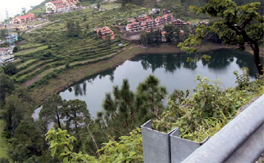Space based observation of Indian wetlands
India’s ‘National Wetland Decadal Change Atlas’ was released on World Wetlands Day 2022 on 2 February. Formally named as ‘Space-Based Observation of Indian Wetlands’, the Atlas is documentation of wetlands
India’s ‘National Wetland Decadal Change Atlas’ was released on World Wetlands Day 2022 on 2 February. Formally named as ‘Space-Based Observation of Indian Wetlands’, the Atlas is documentation of wetlands
The Union Environment Ministry has released the latest version of “Desertification and Land Degradation Atlas of India. It has been published by Space Application Centre, ISRO, Ahmedabad. The A as provides
This detailed inventory of coasts of India published by Space Applications Centre, ISRO, includes studies on coastal land use mapping, inventory of vital coastal habitats, impact of sea level rise and development of coastal zone information system.
This atlas is part of the National Wetland Inventory and Assessment (NWIA) project towards the wetlands of International Importance under Ramsar Convention. These comprise sites constituting representative,
The high altitude lakes are fed by snow-melt, precipitation and springs whereas lakes of lower altitudes receive water from local rains, through streams, Nalas and springs. Many large lakes of Lesser Himalaya

This atlas contains maps and statistics on the High Altitude Lakes (HALs) found exclusively in the Himalayan region at an altitude above 3000 m above mean sea level.
<p>The Himalayan glaciers are a valuable national and global resource – they possess the largest concentration of ice outside of the Polar Regions; regulate global climate; feed most of northern India’s perennial rivers; and are an important indicator of climate change. However, this source of water is not permanent, as glacial dimensions change with the climate.
<p>The Himalayan glaciers are a valuable national and global resource – they possess the largest concentration of ice outside of the Polar Regions; regulate global climate; feed most of northern India’s perennial rivers; and are an important indicator of climate change. However, this source of water is not permanent, as glacial dimensions change with the climate.
<p>The Himalayan region is dotted with hundreds of lakes from low elevation to the high elevations. Many of the lakes of Himalaya are fresh water ones, with or without inflow and out flow. The Himalayan lakes show varying chemistry in terms of solutes, bio-geochemistry, and mineralogy vis-à-vis eco-hydrology of the lakes.
Assessing changes snow and glacier melt runoff by Anil V Kulkarni presented at the National Climate Research Conference, IIT Delhi, March 5-6, 2010.